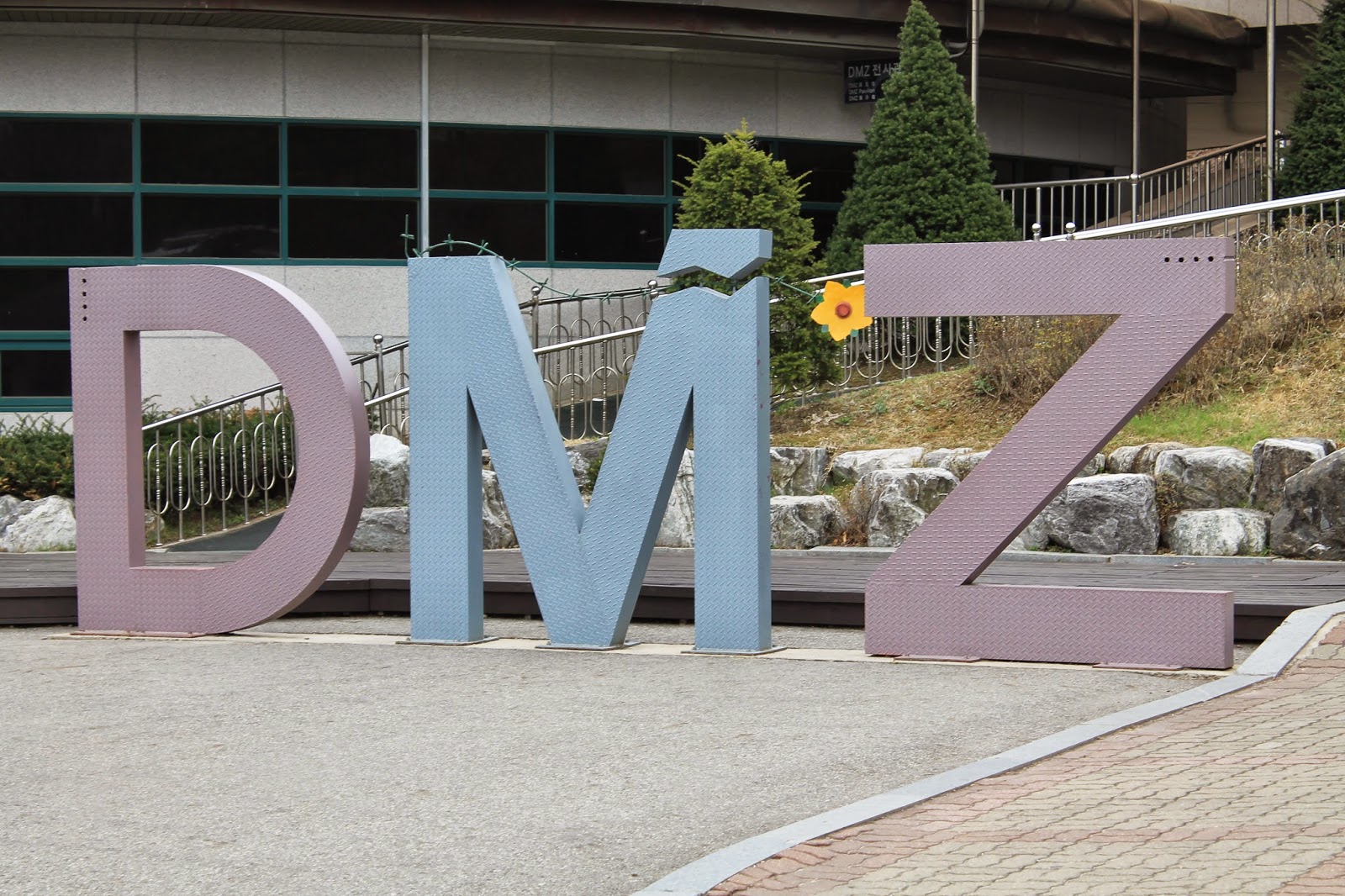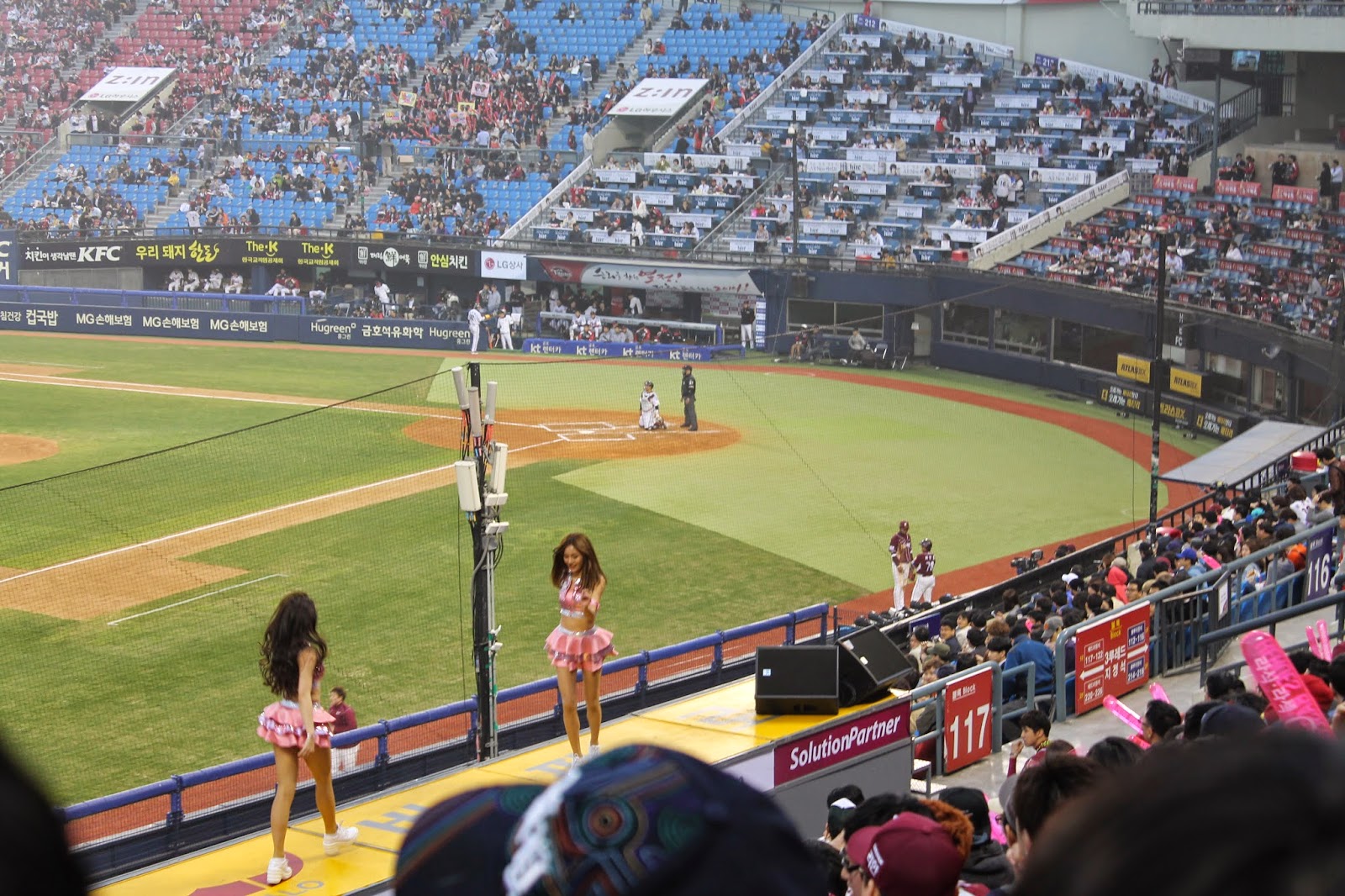We
can now say we’ve stepped foot in both North and South Korea. I would consider
the DMZ (Demilitarized Zone) and JSA (Joint Security Area) tours a must-see
while in Seoul. The tours were highly educational and insightful. You can book a
tour of either DMZ or JSA or both; I recommend both. A reservation is required
for each and you must reserve the JSA Tour at least four days in advance for
security reasons. Rules are strictly enforced and there are several security/ID
checks along the way. Only one tour bus
is allowed into JSA at a time. Once on the tour, we were instructed to form two
single-file lines while staying together at all times. There were very few
times when photography was allowed. Cameras were largely banned from use, and
the military informed us that if we took (or seemed to take) any pictures of
North Korea or any other area they specified, they would confiscate our camera
and delete all photos from it. Everyone was more than respectful of the
rules.
The
military personnel (who were US Army soldiers) shared plenty of information
about the past and current situation between North and South Korea. The soldiers
explained that several South Koreans have family members remaining in North
Korea. There are approximately 10 million people left in North Korea as of
April 2014. During the tour our military guides drove us to the ‘bridge of no return’.
It was there in late 1953 that all prisoners of war from the Korean War between
the countries were brought to decide on which side they wanted to stay, with
the understanding that they could never cross to the other side once the
decision was made. Many chose to stay in North Korea which ultimately broke any
ties they may have had with those from their own families who chose to go to
South Korea.
We
were surprised to learn that there is no way to have communication with anyone
in North Korea. They have no computers, no email access, no phone, no mailing
address – nothing at all. The only way to possibly communicate is through China
since the Chinese people have easier access to North Korea. But North Koreans
have to pay highly for such access and they are the poorest country in the
world. If a North Korean escapes to South Korea all of that persons remaining
family members in North Korea will be tracked down and immediately imprisoned.
It is quite difficult to get past the electric fence that is armed with guards
every 200 meters.
The
guides brought us to the Reunification building that was designed to provide
family reunion events for people affected by the war. Many South Koreans apply
for this event but just a few are chosen. The government then has to find out
if the person’s family in North Korea is even still alive. An actual reunification
event has yet to occur due to lack of agreement on conditions between the two
countries. The military personnel explained there is great hope that a
reunification will happen. When the dividing line was established in 1948 it
was never the intention for the line to be permanent. However, it is now
presumed that the only way unification will occur is when North Korea
collapses.
On
October 17, 1978, Seoul found an infiltration tunnel connecting from North
Korea to South Korea. Since that time they have discovered three more. Our tour
guide took us to visit the 3rd Infiltration Tunnel. No cameras were allowed
inside. In no way were we prepared to walk this tunnel. The climb has been
compared to hiking the Grand Canyon. Since I have never hiked the Grand Canyon
I cannot comment on its truth; however, Douglas and I agree that it is the
steepest hill we have ever climbed. Going down was a breeze which is how we
should have known that it would be hell climbing back up. Once at the bottom of
the tunnel the ceiling is extremely low. I’m about 5 feet 8 inches and I had to
walk in almost a squatted position the entire way. Douglas went back and forth
from walking in a seated position to walking with his upper body bent forward,
looking at the ground. It was as uncomfortable as it sounds. We did have yellow
hard hats on the entire time which was absolutely necessary. Every few minutes
we heard a bang against pipes because someone stood up too high and hit their
head. It’s hard not to hit your head because it’s such an awkward position to
have your body in for an extended period of time. The climb back to the top was
murder on my thighs. Our clothes were almost soaked from sweating during the
trek back up, but the experience was incredible. I still can’t believe we were
there or that we stood on North Korean soil or that we observed South Korean
guards staring directly in the face of their enemies. The entire experience was
surreal.







 |
| This South Korean soldier stands guard at the door to North Korea at a modified position of Taekwondo. We were advised not to touch him or get too close as any movement would be perceived as a threat. Douglas and I, as you can see, happily obliged. |
 |
| This side of the room is actually North Korean soil. That was as far as we would be able to get. |
 |
| The North Korean "Welcome Center" (which has never actually welcomed anyone). |
 |
| The Panmunjom flagpole is in the middle of Kijong-dong, or Propaganda Village in North Korea. It it the world's third tallest flagpole at 525 feet high. The flag it flies weighs 595 pounds dry. |
 |
| Where the axe murder incident occured |
 |
| The bridge of no return |
 |
| Entrance to 3rd infiltration tunnel |
 |
| Lockers for all personal and prohibited belongings |
 |
| Douglas looking into North Korea |
 |
| Reunification Building |
 |
| Last train that traveled into North Korea |
 |
| We ate lunch here after the tour. |
 |
| The hope for the future |





























































